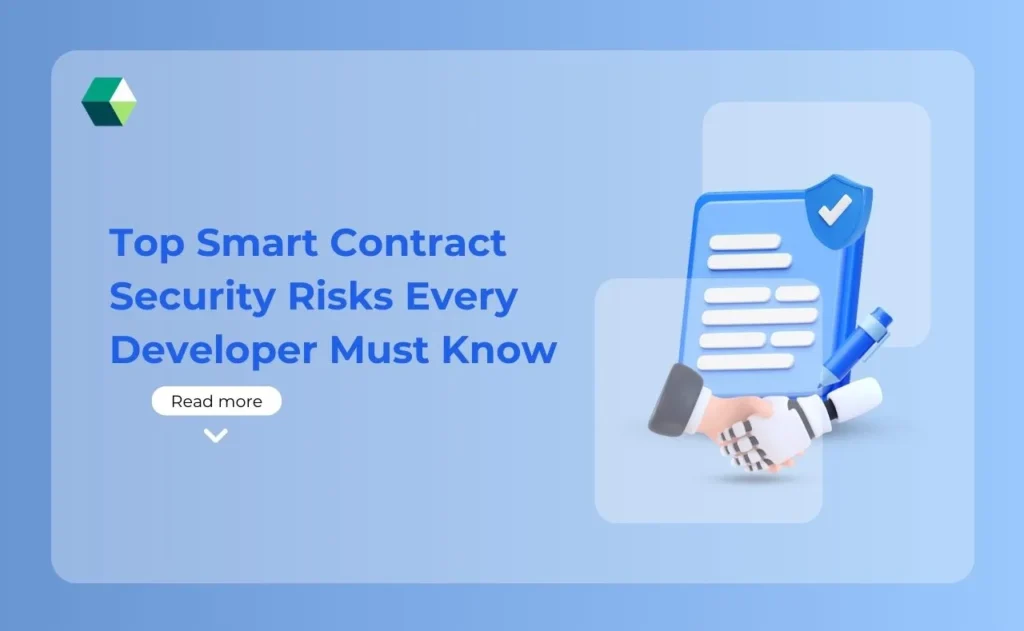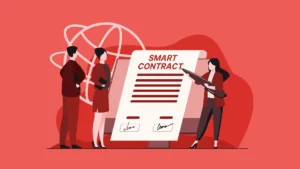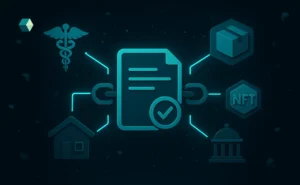
Smart contracts have gained unprecedented popularity in the form of blockchain-enabled products. From decentralized finance (DeFi) protocol to NFT marketplaces and later supply chain solutions, they provide automation, transparency, and trustless transactions that reimagine how industries operate. However, smart contracts like any piece of software can only be trusted based on their code. When vulnerabilities exist, they can be exploited, leading to financial loss, reputational harm, or in some cases, total system failure.
That is why security is by far the most important consideration in the smart contract development lifecycle.
1. Reentrancy Attacks
Reentrancy is one of the most well-known vulnerabilities in smart contracts. It can happen when a malicious contract calls back into the origin contract before finishing the first execution, causing the first contract to lose funds. The infamous DAO hack on Ethereum is a textbook example of this exploit. Here’s how to mitigate it:
- Use the Checks-Effects-Interactions pattern.
- Limit external calls and be strategic about the order of state changes.
For any smart contract development company in India or worldwide, safeguarding against reentrancy will be one of the first steps taken to secure DeFi protocols and dApps.
2. Integer Overflow and Underflow
When numbers overflow their maximum and minimum storage capacities, it can create unanticipated behavior in smart contracts. Newer versions of Solidity mitigate this potential risk; however, developers should remain concerned about this risk.
How to prevent it;
- Make use of safe math libraries.
- Always check the input data and ranges.
These approaches are critical for financial systems created with an associative smart contract development company for DeFi platforms.
3. Gas Limit and DoS Attacks
All smart contracts burned gas to execute. If contracts are poorly optimized, they may run out of gas and fail transaction execution. Attackers may also try to exploit gas limits to create Denial of Service (DoS).
How to Avoid it:
- Optimize the code to cut gas consumption.
- Don’t use unbounded loops and avoid storing much data on-chain.
At every development iteration on the smart contract, run gas efficiency tests at the time of the audit.
4. Access Control Issues
Smart contracts typically have functions that are intended to be called only by certain addresses (for example, now contract owners and/or administrators). If permissions are not properly defined, attackers can call these functions maliciously.
How to mitigate this:
- Use role-based access controls to prevent malicious usage.
- Ensure that use of modifiers (e.g., onlyOwner) are done using best practices.
- Audit contracts to ensure that privileged functions are only callable by the appropriate parties.
For businesses hiring a smart contract development company, it is important to ensure that the developers have experience with access control to protect their assets.
5. Oracle Manipulation
Smart contracts often leverage oracles to retrieve external information (e.g. asset prices) and if the oracle becomes compromised, attackers can influence the data and exploit contracts.
How to mitigate:
- Consider using decentralized oracle solutions.
- Do not rely on a single data source.
When it comes to building DeFi solutions – the best smart contract development companies design secure oracle mechanisms to avoid manipulation.
6. Front-Running Attacks
In public blockchains, transactions are visible in the mempool prior to confirmation. Malicious actors can take advantage of this visibility by broadcasting a transaction with a higher gas fee than yours to get executed first and profit at your expense.
How can you protect yourself from it?
- Consider using commit-reveal schemes.
- Randomized ordering of transactions.
- Explore Layer-2 solutions, ideally with private mempools.
This risk is something that is well known by companies developing custom NFT smart contracts and NFT drops, where the order of execution and timing are very critical.
7. Insecure Randomness
Numerous smart contracts require randomness (for example, in the case of games, or when minting NFTs), but using traditional blockchain parameters that can be predicted (such as block hashes) can create unintendedly manipulatable outputs.
How to guard against this:
- Utilizing verifiable random functions (VRFs).
- Using decentralized randomness oracles.
Every developer doing a smart contracts developer tutorial quickly learns that random outcomes should never rely on blockchain data alone.
8. Logic Errors and Poor Coding Practices
Less emphasis is given to known vulnerabilities like reentrancy; however, contracts can have risks from a bad coding practice or bad business logic.
Ways to protect it:
- Peer review and audits.
- Use smart contract development tools like MythX, Slither, or Remix for static analysis.
- Use secure design patterns.
For those wanting to become smart contract developers, learning secure coding standards is not just as important as learning the Solidity syntax.
9. Inadequate Testing and Audits
Forgoing end-to-end audits or testing is a recipe for disaster. Most hacks originate from basic bugs that could have been caught but were not.
Ways to mitigate it:
- Perform unit, integration, and fuzz testing.
- Engage independent security audits.
- Accept audits as part of the smart contract development process.
Enterprises wanting to drop costs on smart contract development need to appreciate that not auditing, or cutting corners on audits, is generally much more expensive than doing a proper audit due to hacks or failures.
10. Upgradability Risks
unchecked, upgradable contracts can be exploited through upgrade mechanisms, leading to exploitation.
Fast ways to mitigate this:
- Utilize well-known upgrade patterns.
- Use significant access controls to secure upgrade functionality.
- Practice transparency when deploying upgradeable contracts.
For organizations looking to develop on EOS, ensuring safe upgrade paths is particularly important in our rapidly evolving ecosystem.
Beyond Risks – Constructing Secure Smart Contracts.
Mitigating risks is more than just fixing technical problems. Developers and organizations must commit to a security-first mindset as part of the entire life cycle of blockchain solutions. This means:
Selecting the best smart contract development company is important, and one that has experience in security.
- Encourage developers to enroll in smart contract development courses to stay in touch with best practices.
- Utilize smart contract development tools to conduct static analysis, testing, and auditing, that you can trust.
- Follow structured learning resources, which include smart contract developer tutorials/workshops, to increase the quality of coding standards.
If you are building DeFi protocols, NFT platforms, or enterprise blockchain applications, by working with an associative smart contract development company, you are ensuring that projects meet the business goal, while also being protected against an exploit.
Final Thoughts
Smart contracts are powerful, but they still carry risk. For enterprises and startups alike, security is not optional. The risks are all real; if it is not reentrancy, there is oracle manipulation or access control issues; however, you can manage risks with the appropriate awareness and best practices.
If you are planning a blockchain project, evaluate the smart contract development cost in detail, find a good partner to work with, and require an audit and development of smart contracts to be adequately detailed and follow the full flow of a smart contract development. And if you want to be a smart contract developer, get however much education, courses, software tools/resources, free online tuition you need to develop your skills.







